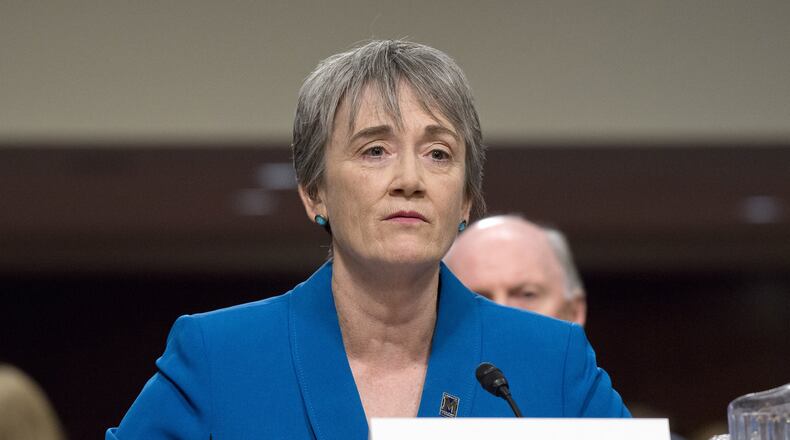“NASIC was going to get bigger anyway,” Thompson said. “But now I think it will grow faster because there will be a separate service very interested in its space research.”
» HIGHER ED: Strike deal will help improve WSU finances, independent report claims
NASIC employs more than 3,000 military, civilian, reserve, guard and contract personnel and the agency is in the process of moving forward with a $182 million expansion of its facilities at Wright-Patt. The expansion will bring employees in six different locations into one facility.
NASIC analyzes air, space, and cyber threats, such as ballistic missile capabilities, and provides findings to the nation’s political and military leaders.
As national decision makers and others have demanded more intelligence, NASIC’s workforce has increased by about 1,500 employees at Wright-Patt, or 100 per year between 2000 to 2015, according to the agency. With more than 29,000 employees, Wright-Patt is already the largest single-site employer in Ohio with an annual economic impact of around $15.5 billion.
Though the Space Force may fuel further growth at NASIC, Thompson said it will likely have a minimal impact on the rest of Wright-Patt. Most of the U.S. Air Force’s space planning and procurement is conducted at the Space and Missile Systems Center in El Segundo, Calif.
The Space Force created by Trump’s directive is something of a “compromise,” Thompson said. Trump’s original vision for a new, space-focused branch of the military was much larger and would require congressional approval.
» BUSINESS: Local bank branches close as consumers turn to technology
“I’m thrilled to sign a new order, taking the next step to create the United States Space Force, so important when you look at defense, when you look at all of the other aspects of where the world will be some day,” Trump said. “This is the beginning, this is a very important process.”
A Pentagon report released in August called for a new “U.S. Space Command” to be responsible for drafting war plans for space and for conducting military operations in space, much like Central Command draws from all military services and is responsible for fighting wars in the Middle East.
Mike Turner, R-Dayton, praised the president’s directive for keeping space policy within the Air Force. He called Trump’s space policy directive the “first step” in making sure the U.S. has what it needs to “ensure our success in the domain of space.”
“I believe it is important that space capabilities remain under the Air Force’s domain,” Turner said. “As we look towards Congress’s responsibility in legislating further on this issue, I look forward to working with my counterparts on the Strategic Forces Subcommittee to ensure that the President’s proposal satisfies our space needs, is cost effective, and results in increased capabilities.”
NASIC declined to comment for this story and referred all questions to the Secretary of the Air Force.
The order signed by Trump, Space Policy Directive 4, calls for a chief of staff of the Space Force within the Air Force. That officer would be a member of the Joint Chiefs of Staff, according to an outline. There also be a new under secretary of defense for space to be appointed by the president.
The proposal calls for the Space Force to organize, train and equip personnel to defend the U.S. in space, to provide independent military options for “joint and national leadership” and “enable the lethality and effectiveness of the joint force,” according to the administration’s outline.
The Associated Press contributed to this story.
FIVE FAST READS
• Easton to anchor expansion with new store in 2019
• WSU may face more scrutiny despite deal on federal visa investigation
• Heating costs could spike this winter as natural gas prices increase
• EXPERT: Wright-Patterson ‘crucial to avoiding a defeat if there’s a World War III,’
• What UD’s change in its China Institute says about shifts in higher education
By the numbers
1,500: Number of NASIC employees added from 2010 to 2015.
$182 million: Amount to be spent on NASIC expansion.
29,423: Number of people employed by Wright-Patt.
$15.5 million: Total economic impact of Wright-Patt.
About the Author
